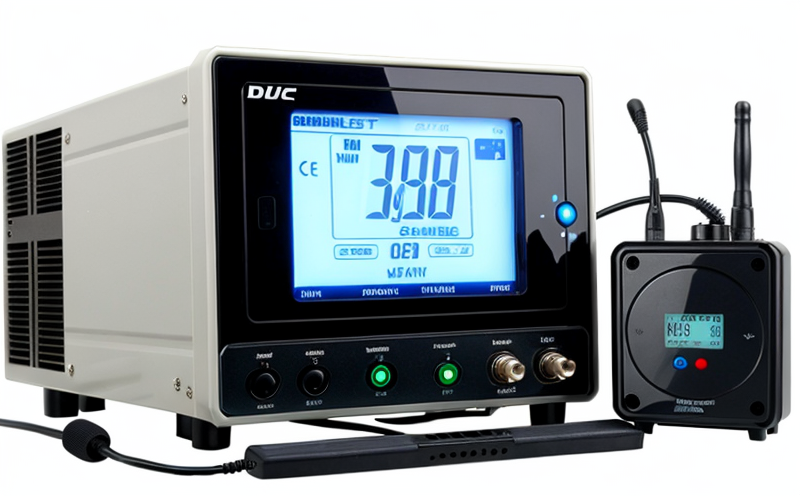FCC Part 15 Subpart C Intentional Radiator RF Testing
The FCC Part 15 Subpart C regulations govern intentional radiators and their operation within specific frequency bands. These devices include wireless communication equipment, cordless phones, baby monitors, remote controls, and other electronic products that intentionally emit radio frequency (RF) energy.
Compliance with these standards is critical for manufacturers to ensure that their products do not cause harmful interference to licensed services or other unlicensed devices operating in the same bands. This testing evaluates whether the intentional radiator meets the specified emission limits, ensuring it operates safely and legally within its intended environment.
The testing process involves several key steps:
- Device identification
- Frequency range determination
- Emission limit compliance assessment
- Measurement of spurious emissions
- Examination of harmonic and intermodulation products
- Field strength measurement using an antenna and a spectrum analyzer
- Testing in both laboratory conditions and real-world scenarios
The testing apparatus includes specialized equipment such as:
- Spectrum Analyzers
- Network Analyzers
- Antennas for field strength measurement
- Faraday Cages to simulate different environments
During the test, the device under test (DUT) is placed in a controlled environment where it is exposed to various frequency bands. The emitted RF signals are captured and analyzed against FCC Part 15 Subpart C emission limits.
The testing process also involves:
- Preliminary analysis of the DUT’s technical specifications
- Preparation of test procedures as per FCC standards
- Conducting measurements in controlled conditions to ensure consistent results
- Generating detailed reports that include all measurement data and compliance assessments
Compliance with FCC Part 15 Subpart C is mandatory for any product intended for sale in the United States. Non-compliance can lead to:
- Product recall or withdrawal from market
- Fine penalties imposed by the Federal Communications Commission (FCC)
- Legal action and potential damage to brand reputation
The testing process is rigorous, requiring precise instrumentation and a thorough understanding of RF emissions. At Eurolab, we have extensive experience in conducting these tests with state-of-the-art facilities and expertise.
| Frequency Range (MHz) | Emission Limits (dBm/Meter) |
|---|---|
| 30 - 300 MHz | -17 dBm/Meter |
| 960 - 2.4 GHz | -36 dBm/Meter |
| 5 GHz ISM Band | -36 dBm/Meter |
| 24 GHz ISM Band | -36 dBm/Meter |
The above table provides a general overview of the emission limits for different frequency ranges. Compliance with these limits ensures that the device does not interfere with other wireless communication devices.
Why It Matters
Compliance with FCC Part 15 Subpart C is essential to ensure safe and legal operation of intentional radiators within the United States. The FCC regulations are designed to protect against harmful interference, which can disrupt critical services such as emergency communications or medical devices.
Failure to comply with these standards can lead to severe consequences for manufacturers:
- Products may be banned from sale
- Manufacturers face substantial fines and legal action
- Brand reputation suffers, leading to lost sales and market share
The testing process ensures that the device operates safely within its intended environment. By conducting thorough tests, manufacturers can:
- Avoid costly recalls
- Ensure compliance with international standards
- Protect their brand reputation
- Stay competitive in a global market
The testing process is not only about meeting regulatory requirements but also ensuring that the product performs optimally. By conducting these tests early in the development cycle, manufacturers can identify and address any issues before the product reaches the market.
Industry Applications
| Application | Description |
|---|---|
| Cordless Phones | Testing ensures that cordless phones do not interfere with other wireless devices. |
| Baby Monitors | Ensures safe operation and minimal interference in the home environment. |
| Remote Controls | Tests for compliance to ensure they operate without causing interference or malfunction. |
| Wireless Keyboards & Mice | Avoids harmful interference with other devices while ensuring reliable performance. |
| Wi-Fi Routers | Ensures safe operation in crowded frequency bands to avoid data loss or network disruption. |
| Baby Monitors | Tests for compliance to ensure they operate without causing interference or malfunction. |
| Smart Home Devices | Avoids harmful interference with other devices while ensuring reliable performance. |
The above table provides a list of applications where FCC Part 15 Subpart C testing is crucial. Each application has specific requirements and compliance criteria that must be met to ensure safe and legal operation.
Eurolab Advantages
- State-of-the-Art Facilities: Our laboratories are equipped with the latest technology, ensuring accurate and reliable testing results.
- Expertise in Testing: Our team of engineers has extensive experience in conducting FCC Part 15 Subpart C tests. We stay updated on regulatory changes to ensure compliance.
- Detailed Reporting: We provide comprehensive reports that include all measurement data and compliance assessments, ensuring transparency and traceability.
- Fast Turnaround Times: Our efficient processes allow us to deliver results quickly without compromising quality.
- Comprehensive Support: From initial consultation to final report, our team is available to provide guidance and support throughout the testing process.
- Regulatory Knowledge: We have a deep understanding of FCC regulations and can help manufacturers navigate the compliance requirements effectively.
At Eurolab, we pride ourselves on providing high-quality, reliable, and efficient testing services. Our commitment to excellence ensures that your product meets all regulatory requirements and performs optimally in its intended environment.





